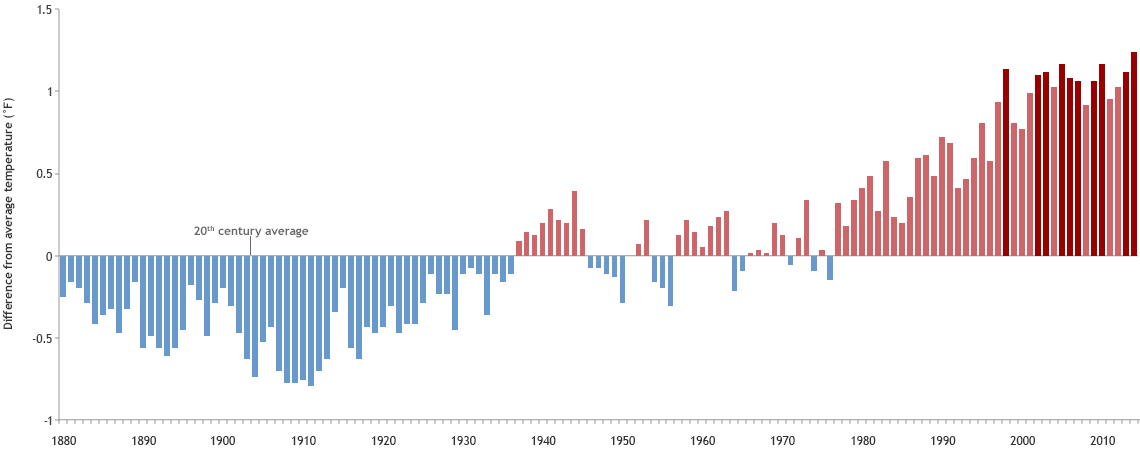January 15, 2015
•••••
In 2014, the combined land and ocean surface temperature was 1.24°F (0.69°C) above the 20th century average, making the year the warmest since records began in 1880. The ocean alone was record warm, while the land alone was fourth warmest. Five months set new records for warmth: May, June, August, September, and December. October tied for record warmest.
The 20 warmest years in the historical record have all occurred in the past 20 years. Except for 1998, the 10 warmest years on record have occurred since 2002.

•••••
FAQ: Why do you use the 20th-century average for baseline for the statistics and rankings, but use 1981-2010 for the maps?
The short answer is because of global warming.
The Earth’s average surface temperature has risen significantly enough over the 20th century that if we made a map that compared any recent monthly average to the 20th-century average for that month, virtually the entire globe would have positive anomalies; most of the map would appear in shades of red.
Such a map would be less meaningful for helping people understand how a the current month or year compared to their recent (or even lifetime) experience of climate, which is often more interesting and relevant to people than how the current period compares to the 20th-century average.
•••••
http://www.ncdc.noaa.gov/sotc/summary-info/global/2014/12
•••••
• During 2014, the average temperature across global land and ocean surfaces was 1.24°F (0.69°C) above the 20th century average. This was the highest among all 135 years in the 1880–2014 record, surpassing the previous records of 2005 and 2010 by 0.07°F (0.04°C).
• Record warmth was spread around the world, including Far East Russia into western Alaska, the western United States, parts of interior South America, most of Europe stretching into northern Africa, parts of eastern and western coastal Australia, much of the northeastern Pacific around the Gulf of Alaska, the central to western equatorial Pacific, large swaths of northwestern and southeastern Atlantic, most of the Norwegian Sea, and parts of the central to southern Indian Ocean.
•••••

No comments:
Post a Comment